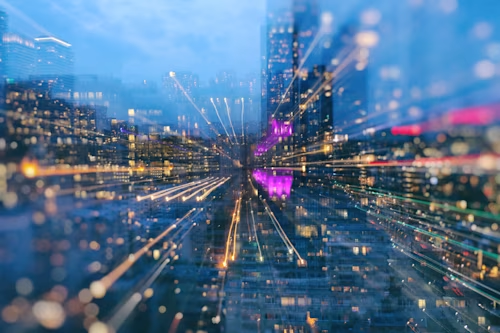
3 Lessons in Innovation from Netflix, Apple and Google
Leading tech companies offer examples of how to drive innovation by understanding what customers want, leveraging past successes and creating a strong culture.

Innovation is the name of the game in today’s highly competitive economy, and the right strategies can help companies gain that winning edge. Those seeking a little inspiration needn’t look further than tech giants Netflix, Apple and Google. Let’s take a look at how all three used forward-thinking tactics to become both leaders and trailblazers in their respective spaces.
Know what your customers want
“Netflix” is so ubiquitous that we use it as a verb. People love Netflix’s personalized movie and television recommendations, which are made possible due to its data collection and analysis. Although real-time data insights are responsible for many of Netflix’s smart business decisions, that wasn’t available to former competitor Blockbuster. During the rise of the internet, Blockbuster overestimated the value of the in-store experience and didn’t pursue internet-enabled opportunities until much later.
Other takeaways include:
Giving customers what they’re asking for: As Netflix discovered, people love the convenience of renting movies without having to change out of their pajamas. Netflix created a business model based on what its customers wanted, not what it thought customers wanted.
Reinventing yourself: Don’t be afraid to reimagine a business if it no longer serves your customers.This is something Blockbuster should have considered earlier, but instead, it was too slow to respond.
Offering personalization: Sixty percent of consumers are ready to become repeat buyers after they receive a personalized experience. Take a page from Netflix’s book and build personalization into your digital interactions.
Monitoring industry trends: At one point, Netflix was a DVD-by-mail rental service. But when it realized that streaming video would disrupt its business model, Netflix did something its competitors didn’t: It became the streaming service it was trying to hedge against.
Don’t forget what made your company successful
When you search for something online, you “Google” it. That’s because Google is the world’s top search engine. But this wasn’t the case in the 1990s, when numerous search-engine companies jockeyed for the title. Google made optimizing its algorithm a top business priority while its competitors focused elsewhere, like acquiring internet startups, hoping to become all things to all people. This diverted attention away from search functionality, which was a key reason why customers used those other sites.
More lessons from Google include:
Determining why customers like you: Google recognized the potential of delivering highly accurate, super-fast search results and made this effort the foundation of its business strategy. If Google had lost sight of what made it successful in the first place, it might have never become what it is today.
Listening to feedback: Customers and employees are the lifeblood of your organization, so take their concerns seriously. Let insights inform your decision-making, just as Google did.
Ethics and transparency: Trust is massively important in customer relationships, and people like to do business with companies that practice transparency. When one company allowed websites to pay for a higher search ranking, people believed that the accuracy of the results was compromised. Google responded by rating results on the value they provide.
Resolving customer frustrations: Over the years, Google added search-functionality improvements, such as eliminating unhelpful content from results and developing Universal Search. Though we’re all used to this now, it was a seemingly small adjustment that’s saved thousands of hours of time. And it came about because Google prioritizes customer problem-solving as a core business objective.
Create a culture where employees feel respected
When you think of Apple, you probably think about innovation (and iPhones). That’s because Apple permitted itself to grow through challenges. Conversely, innovation is stifled when employees aren’t heard. When your culture is collaborative and open, you get more done—and people want to buy from you. This is the first step toward a great customer experience.
Other steps include:
Transparency: Transparency is about more than building a rapport with customers and employees. When a company is genuine, it’s better for brainstorming and collaboration. Companies that don’t practice transparency can be set in their ways and slow to change. They also struggle with communication.
Embracing challenges: When you deal with any kind of change, sometimes it can feel like you’re taking two steps forward and three steps back. But the important thing is to know that if you keep at it, you will succeed.
Showing results: Sharing with your employees how their work brings positive change to the world can be a powerful tool. Consider Apple’s core team of engineers. They knew the iPhone would be a world-changing invention, which inspired them during its development.
Mull new ideas: Apple doesn’t always hit home runs, but that hasn’t stopped it from becoming one of the most successful companies in the world. It sees mistakes as part of the creative process. Set aside time for employees to safely explore their ideas.
Every successful company faces challenges
Some struggle to accept change and others readily adapt to new competitors, business models and technology. The only issue is whether yours is ready for the new challenges presented by a genuine digital transformation—and how you respond to them. Even when you prepare the business for its next stage, you need to consider how to make your staff happy—even delighted—with the changes underway.
Read Change Management Tips for the Nervous Digital Transformer for advice about the best way to help your staff make the transition.
Related posts
Docusign IAM is the agreement platform your business needs


